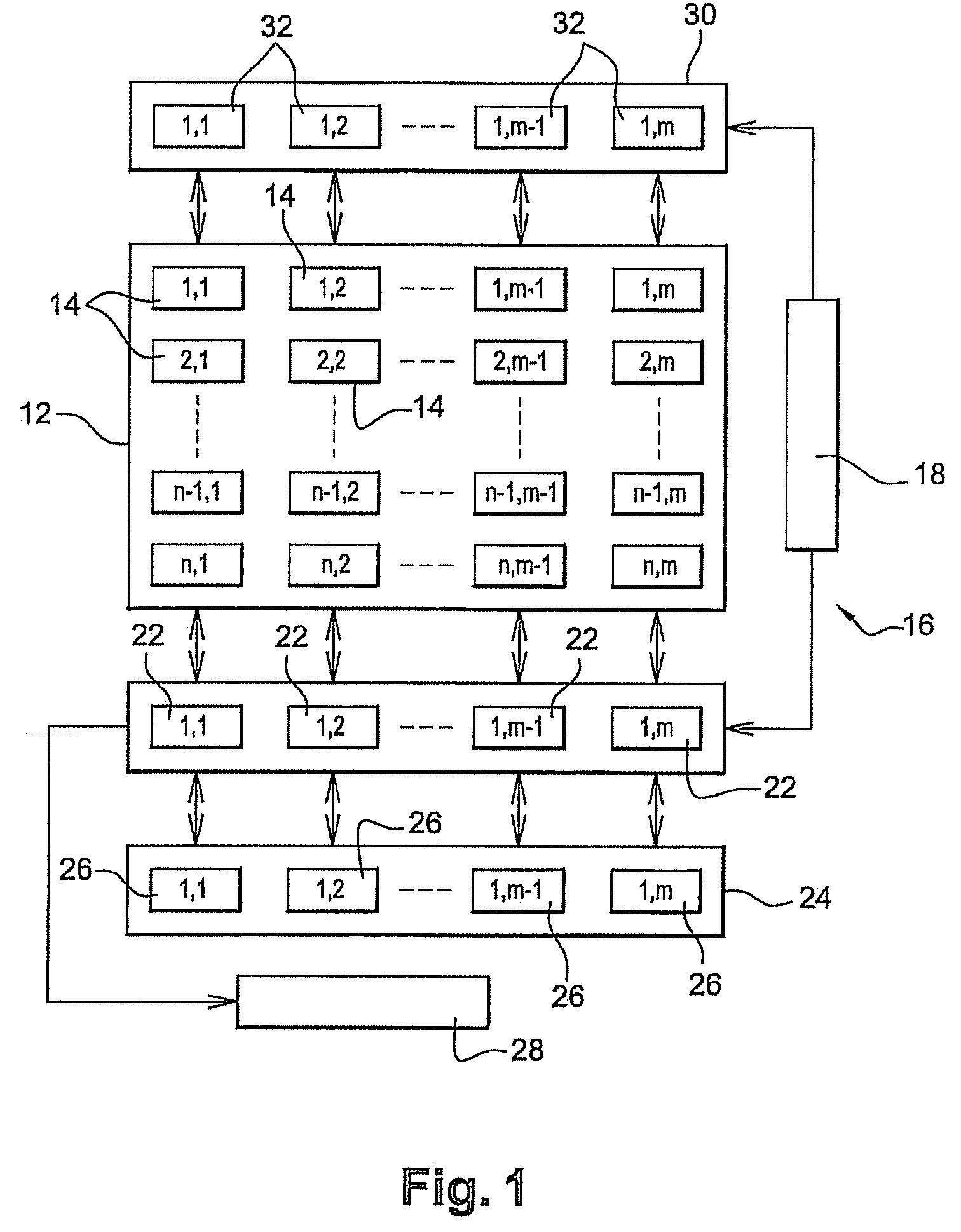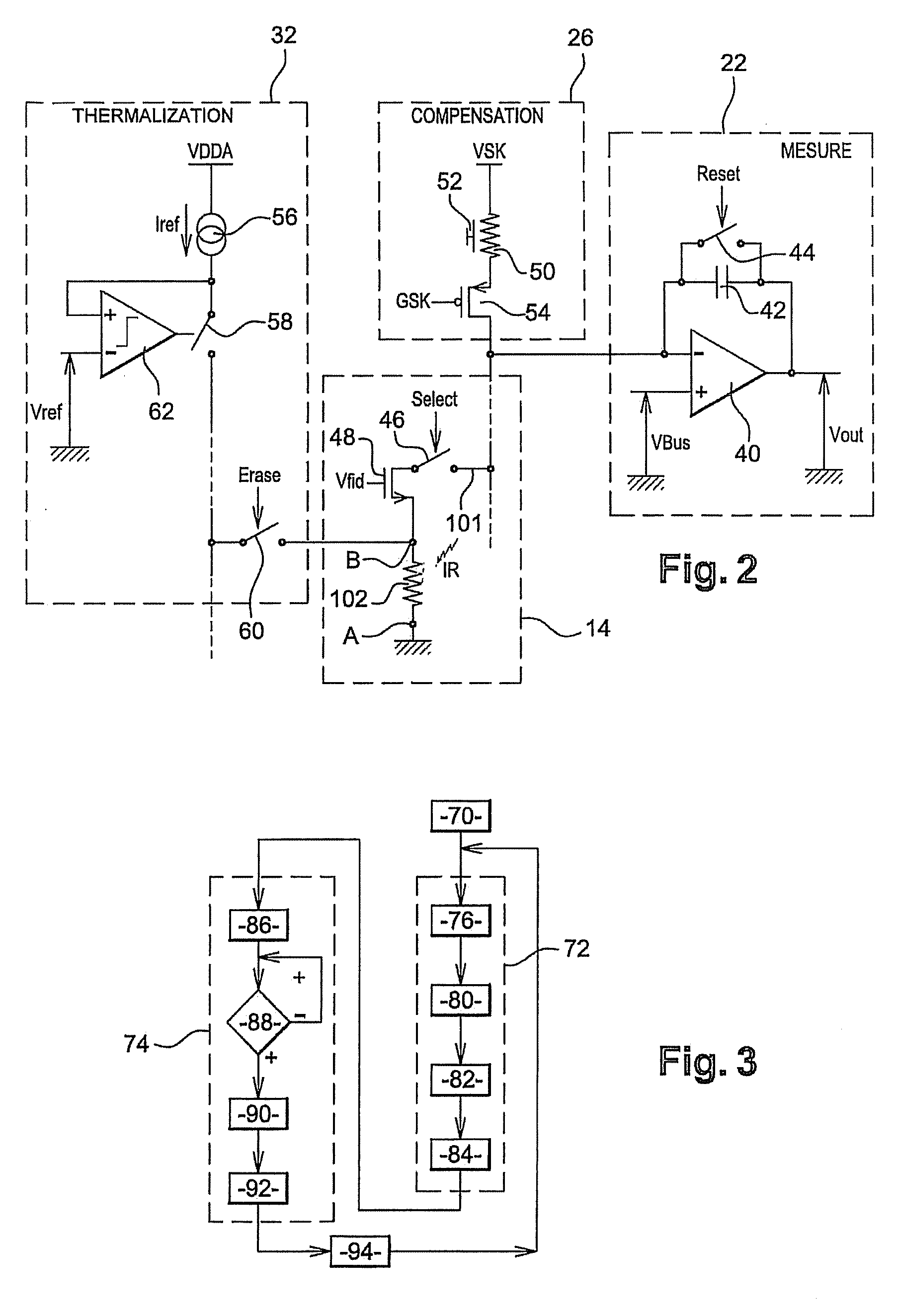Device for detecting infrared radiation comprising a resistive imaging bolometer, a system comprising an array of such bolometers and a method for reading an imaging bolometer integrated into such a system
a technology of resistive imaging and bolometer, which is applied in the field of infrared imaging and pyrometry using bolometer, can solve the problems of limiting the market penetration of uncooled bolometric detectors for applications, limiting its response time, and bolometers having trouble keeping pace with such variations, and achieves high thermal resolution. the effect of performan
- Summary
- Abstract
- Description
- Claims
- Application Information
AI Technical Summary
Benefits of technology
Problems solved by technology
Method used
Image
Examples
Embodiment Construction
[0059]FIG. 1 schematically shows a bolometric detector which comprises:[0060]A two-dimensional imaging array 12 comprising n rows and m columns of resistive imaging bolometers 102, where n and m are integers equal to or greater than 1. The imaging array 12 is arranged in the focal plane of optics that are transparent to infrared radiation (not shown);[0061]A readout circuit 16 implemented in a substrate underneath the surface of the imaging array 12. Readout circuit 16 comprises a row-by-row addressing circuit 18 and, for each column of imaging array 12, a measuring circuit 22 capable of being connected to every imaging bolometer in their column by electrical means;[0062]An array of compensation bolometers 24 comprising one or more compensation circuits 26 located opposite every column of imaging array 12, but positioned off the imaging array. Array 24 comprises, for example, for every column of imaging array 12, a compensation circuit 26 capable of being connected to every imaging ...
PUM
 Login to View More
Login to View More Abstract
Description
Claims
Application Information
 Login to View More
Login to View More - R&D
- Intellectual Property
- Life Sciences
- Materials
- Tech Scout
- Unparalleled Data Quality
- Higher Quality Content
- 60% Fewer Hallucinations
Browse by: Latest US Patents, China's latest patents, Technical Efficacy Thesaurus, Application Domain, Technology Topic, Popular Technical Reports.
© 2025 PatSnap. All rights reserved.Legal|Privacy policy|Modern Slavery Act Transparency Statement|Sitemap|About US| Contact US: help@patsnap.com



